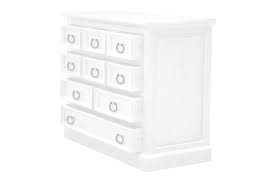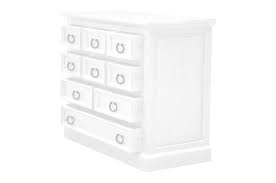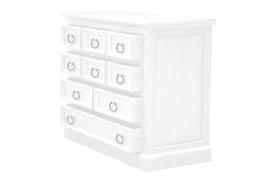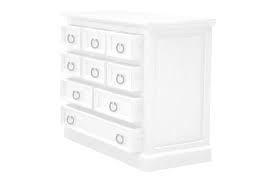For this reason, they are aptly called interarch rubber bands. Type 2 rubber bands for braces are typically used for an overbite.

Keepbraces bands in an old compact so you can see what
Benefits of using rubber bands with braces.

What are rubber bands used for braces. First you have rubber bands called ligatures that are wrapped around each individual bracket to hold the archwire in place. That’s because, over time, the elasticity of the rubber bands wears down, reducing their strength. When teeth begin to move in response to wearing gums, they move quickly and comfortably.
Without them, treatment times will be far slower as many of these bands help provide specific tension to exact areas of your mouth, helping to shift teeth and provide other important essential functions when it comes to your orthodontic treatment. It’s not everyone who gets a rubber band. Rubber bands are used to correct your bite to its ideal position.
When looking to get braces put on your teeth, you may be provided with some options for elastic ligatures by your orthodontist. However, if the rubbers are not worn constantly, the teeth will be painful and their movement will be stopped. Rubber bands are used for a similar purpose, which is to assist in the movement of jaw and teeth.
These bands span across both the top and bottom arches. Rubber bands are the elastic made components for braces that are used to put extra force move to the tooth for orthodontic tooth movement. They stay in place all of the time and are only removed by your orthodontist when he or she adjusts your braces at your appointment.
There are two main benefits of using rubber bands with braces, which overlap, in a sense. Usually, you may have them on either side of the jaw. Elastic ligatures, or more commonly known as ‘rubber bands’, surround your braces and are used primarily to hold the archwire into the brackets;
This helps pull the jaw. So, exactly how do rubber bands help someone achieve a straighter, healthier. The main advantage of rubber bands is that they can help provide extra force to move teeth into positions that braces cannot do independently.
This is what rubber bands do. But they can also be utilized for other purposes, such as directing the movement of the teeth in a particular direction. The following is a complete overview of the role that rubber bands play in the braces treatment process.
Rubber bands, or elastics, are generally used to help improve how teeth fit together. Bands for an overbite start further forward in the mouth, near the canines, on the top of the mouth. In recent times, a number of doctors are using the rubber bands along with braces in order to help in the better treatment of their patient.
The reason doctors use rubber bands is that they are highly helpful in the straightening of teeth. The importance of rubber bands While metal braces correct the alignment of your teeth, orthodontic rubber bands are used to correct the alignment of your bite and jaw.
The bands have the power of elasticity. An overview of rubber bands for braces. The bands connect to tiny hooks on your braces brackets and can be easily removed and replaced as needed.
So, the purpose of rubber bands on braces is to obtain a proper bite. They work with your braces and speeds up the process of the correction of tooth directions. They're like an additional tool that helps create more precise tension and pressure.
The brackets and metal wires used in braces treatment pull teeth into a straight position, which improves teeth and jaw position. Rubber bands are needed to address overbites and underbites because the brackets and archwires of braces don’t actually fix these issues. Your braces will not come off until your bite is correct, so your cooperation to wear your rubber bands faithfully is essential to complete your treatment as soon as possible.
They stretch back and down to the lower molars on the lower jaw. The rubber bands have two roles when it comes to orthodontic treatment. In addition to improving the alignment of teeth, braces are designed to also improve the alignment of the jaw and improve a person’s bite pattern, which rubber bands assist in doing.
It is important to note that interarch rubber bands are. Since archwires don’t connect the upper and lower jaws, they can’t realign the jaws so that they’re directly above and below each other. So, let’s discuss why they are important.
Sometimes, you may have on one side. Rubber bands on braces are used to fix an overbite, underbite, and open bites to help straighten teeth and give you beautiful smile. They serve an important role in adding extra tension to the teeth to help them move into the right position, and they also ensure the braces stay in place.
Stretchy rubber bands, also known as “elastics” are used for many purposes. Orthodontic rubber bands, also known as elastics, are small elastic bands that hook onto your braces from the top teeth down to the bottom teeth. As mentioned earlier,orthorubber bands are an important part of helping to pull the teeth into the correct position.
Rubber bands (elastics) for braces. The second benefit of rubber bands is that. If you wear your rubber bands one day and then leave them off the next day, your teeth will not move as rapidly and vastly delay your treatment plan.
Just like metal brackets and wires, rubber bands are also an essential part of many people’s orthodontic treatment. Since this is the most difficult part of the braces process, you will want to be sure that you wear them correctly and do not leave them off after eating. Everyone who wears braces have these rubber bands, but.
What are orthodontic rubber bands? You may also see them referred to as elastics. In some cases, orthodontic elastics (sometimes known as rubber bands) are used to apply additional pressure in a specific.
They help pull your teeth and jaws together and bring them to their desired position. Rubber bands are used to increase the force that’s applied to a specific area of your mouth.

Rubber Bands for Braces Open wide! More senior citizens

Elastics (Rubber Bands) help correct the bite. (With

braces braceface metalbraces girlswithbraces elastics

Solution for lengthy belt strap. Use a braces rubber band

Pin by John Beeson on Braces and RetainersOrthodontics

Mettez des élastiques pour vos bretelles dans un vieux

Elastics (rubber band) worn by the px once the teeth are

Braces image by Lori Anne in 2020 Dental braces, Braces

Braces Update 4 Rubber Bands Braces rubber bands

Everbilt 1 in. Satin Brass Corner Brace (4Pack)15382

braces colors Braces Rubber Bands Colors Braces colors

braces girlswithbraces metalbraces elastics Cute

colored_braces_bands_different_braces_colors.jpg (2800×

Why Rubber Bands are used with Braces? Interesting Fact

Severe protrusion of the upper teeth treated WITHOUT







